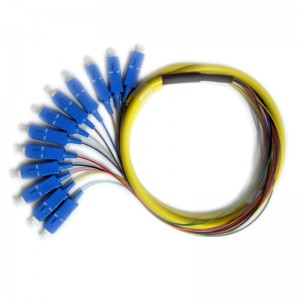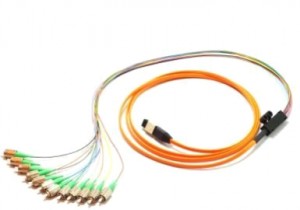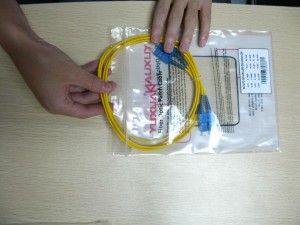Fiber loopback cable and fiber loopback plugs are called fiber loopbacks. They can provide a simple and effective means of testing the capabilities of your optical networking equipment. Typically used for fiber optic testing applications or network restorations. For the testing applications, the loopback signal is used for diagnosing a problem. Sending a loopback test to network equipment, one at a time, is a technique for isolating problems.
In the past, in order to test the optical continuity of optical fibers originating at a central office that pass through a tap point and terminate at a multi-fiber ferrule, it was necessary for a field technician and/or optical signal detection equipment to be physically present at the end of the tether in order to measure signal strength or loss through the total length of optical fiber. This time consuming procedure results in increased deployment costs in FTTx networks. Further, by having to measure signal strength and loss at the physical downstream location, it is often necessary to remove the dust cap in order to provide access to the ferrule, thus exposing the ferrule to contaminants and potential physical damage. That comes to fiber loopback cable.
They are designed for testing, engineering and the burn-in stage of boards or other equipment. Optical loopback adapters provide system test engineers a simple but effective way of testing the transmission capability and the receiver sensitivity of network equipment.
Fiberstore loopbacks are precision terminated and feature extremely low loss characteristics for transparent operation in the test environment and in form of cable and module types.
Similar as fiber optic patch cords, fiber loopback can be with various jacket types and cable diameters, and they can be with different terminations and length. We make fiber optic loopbacks strictly according to industry standard. Each of the loopback is functionally tested before shipping. And we offer custom assemblies for fiber optic loopbacks such as custom connector configurations and special polishing.
The two most commonly used loopback cable fiber patch cord are SC and LC fiber Connector type, just like fiber patch cord assemblies, loopback fiber patch cord are classified by single mode type and multimode type. Typically single mode SC and LC type fiber loopback patch cord are blue color, typical multimode SC and LC type loopback fiber patch cord are beige color, and this also goes with the practice of fiber patch cords. fiber loopback plug fiber patch cord can be 9/125 single mode or 50/125 multimode, or 62.5/125 multimode.
Fiber optic loopbacks are with compact design, and they are compliant with fast ethernet, fiber channel, ATM and Gigabit ethernet. we also offer custom assemblies for fiber optic loopback. the common fiber optic loopbacks types are: SC fiber optic loopback, FC fiber optic loopback, LC fiber optic loopback and MTRJ fiber optic loopback.
Fiber Optic Loopback Specifications:
Insertion loss: Less than 0.2dB
Exchangeability = 0.2 (500 cycle passed)
Operating temperature range: Less than 0.2 dB ( -40 to +80°C)
Applications
R&D
Fiber labs
Telecom testing
FTTX testing



